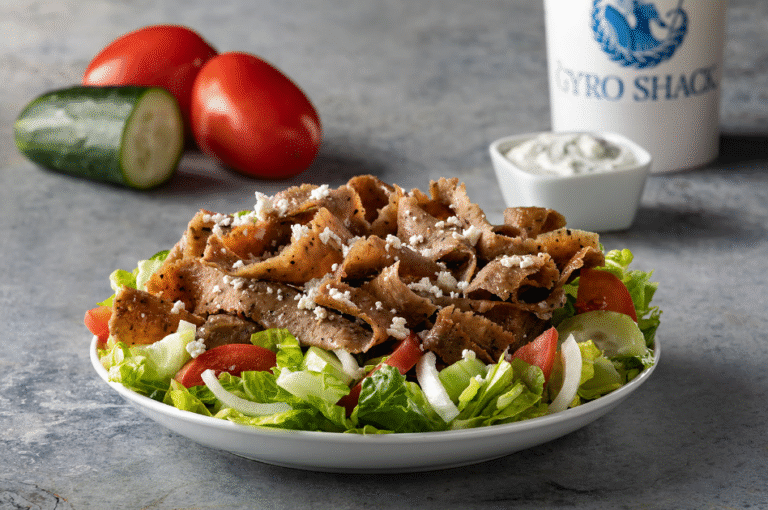Step by Step Guide to Making an Omelette
Gathering Your Brunch Ingredients
Getting ready to whip up a fantastic omelette starts with having the right stuff on hand. It’s like planning a trip to find the best brunch near me or breakfast places near me – you need to know what you’re looking for.
Selecting Fresh Eggs
Eggs are the star, so pick good ones. Look for eggs that are clean and have smooth shells. The color of the shell doesn’t really matter; it’s more about how fresh they are. You can usually tell by the date on the carton. Fresher eggs have firmer whites and yolks that stand up tall.
Choosing Your Fillings
This is where you get to be creative! Think about what you like. Some popular choices include:
- Cheese: Cheddar, Swiss, feta, or goat cheese all work well.
- Vegetables: Onions, bell peppers, mushrooms, spinach, and tomatoes are great.
- Meats: Ham, bacon, or sausage add a nice savory touch.
Don’t be afraid to mix and match. Just remember not to overstuff your omelette, or it might be tricky to fold.
Essential Kitchen Tools
To make a great omelette, you don’t need much. Here’s a quick rundown:
- A good non-stick skillet (about 8-10 inches is usually perfect).
- A whisk or fork for beating the eggs.
- A spatula, preferably heat-resistant, for folding and serving.
- A small bowl for mixing the eggs.
Having these ready makes the whole process much smoother. You want to be prepared, not scrambling for a tool when the eggs are in the pan!
Preparing the Omelette Base
Alright, let’s get down to the nitty-gritty of making that omelette base. This is where the magic really starts, before you even think about adding cheese or veggies. It’s all about the eggs and how you treat them.
Whisking Eggs to Perfection
So, you’ve got your eggs. How many? Well, for a standard omelette, two or three is usually a good starting point. You want to get them into a bowl. Now, the whisking. Don’t just stir them around. You need to really get some air into them. Grab a whisk, or even a fork if that’s all you have, and beat those eggs like you mean it. You’re looking for a uniform yellow color, with no streaks of white or yolk left. The goal is to break down the whites and yolks so they’re fully combined and a little frothy. This helps make the omelette light and fluffy.
Some people like to add a splash of milk or water. It can make the omelette a bit more tender, but it’s not strictly necessary. If you do add liquid, just a tablespoon or so per couple of eggs is plenty. Too much and you’ll end up with a watery mess.
Seasoning for Flavor
Now, while you’re whisking, or right after, is the time to season. Salt and pepper are your best friends here. Don’t be shy with the salt; it really wakes up the flavor of the eggs. A good pinch of black pepper adds a nice little kick. You can get fancy with other spices too, like a dash of paprika or some dried herbs, but for a classic omelette, salt and pepper are all you really need. Just make sure you mix the seasoning in well so you don’t get a surprise salty bite.
Here’s a quick rundown:
- Eggs: 2-3 per omelette
- Whisking: Beat until uniform and slightly frothy
- Optional Liquid: 1 tbsp milk or water per 2 eggs
- Seasoning: Salt and freshly ground black pepper to taste
Cooking Your Delicious Omelette
Now that your eggs are prepped and seasoned, it’s time to get cooking. This is where the magic happens, transforming simple ingredients into a fluffy, delicious omelette.
Heating the Pan
First things first, grab a non-stick skillet. A good quality one makes all the difference. You want to heat it over medium heat. Too high, and your omelette will burn before it cooks through. Too low, and it’ll take forever and might get rubbery. A little butter or oil is your friend here. Let it melt and coat the bottom of the pan. You’re looking for a gentle shimmer, not a smoking inferno. A good test is to flick a tiny drop of water into the pan; if it sizzles and evaporates quickly, you’re good to go.
Pouring the Egg Mixture
Once the pan is ready, pour your whisked eggs into the hot skillet. They should start to set around the edges almost immediately. Don’t touch it right away! Let the bottom layer cook for about 30 seconds to a minute. You’ll see the edges begin to firm up. Then, using a spatula, gently push the cooked egg from the edges towards the center, tilting the pan so the uncooked egg flows underneath. Repeat this a few times around the pan. This helps cook the omelette evenly and creates those lovely soft curds.
Adding Your Favorite Fillings
When the omelette is mostly set but still a little wet on top – this is the perfect time to add your fillings. Sprinkle your cheese, cooked vegetables, or meats over one half of the omelette. Don’t overload it, or it’ll be hard to fold. Think about what you want inside and distribute it evenly. This is your chance to get creative with flavors!
Folding and Finishing Touches
Now for the part that separates a good omelette from a truly great one: the fold. It might seem a little intimidating at first, but with a little practice, you’ll be folding like a pro. The goal here is to get that beautiful, neat half-moon shape that holds all your delicious fillings inside.
The Perfect Fold
When the eggs are mostly set but still have a little sheen on top, it’s time to fold. Gently slide your spatula under one half of the omelette. Lift that half and carefully fold it over the other half. The key is to be gentle; you don’t want to break the omelette or push out the fillings.
Ensuring Even Cooking
After folding, let the omelette cook for another 30 seconds to a minute on each side. This helps to melt any cheese you’ve added and makes sure the inside is cooked through without overcooking the exterior. You’re looking for a light golden-brown color.
Serving Your Masterpiece
Once it’s cooked to your liking, slide the omelette directly from the pan onto your plate. A little shimmy of the pan usually does the trick. Serve it immediately while it’s hot and fluffy.
A common mistake is to overcook the omelette before folding. You want the center to be just set, not completely dry. This residual heat will finish the cooking after the fold.
Elevating Your Omelette Experience
So, you’ve mastered the basic omelette. That’s great! But what if you want to take your breakfast game to the next level? It’s not just about the eggs anymore. Think about what you’re pairing it with and what you’re putting inside. It’s about making it a whole experience, not just a quick meal. If you’re looking for an omelette near me, you’ll find places that do some pretty wild things with them, but making them at home is where the real fun is.
Creative Filling Combinations
Don’t just stick to cheese and ham. Get adventurous! Think about textures and flavors that work well together.
- Savory: Spinach, feta, and sun-dried tomatoes. Or maybe some caramelized onions with gruyere cheese. Mushrooms and swiss are always a good bet too.
- Spicy: Jalapenos, pepper jack cheese, and a dash of hot sauce. Or try chorizo with some roasted red peppers.
- Herby: Fresh chives, dill, and a bit of goat cheese. Parsley and a squeeze of lemon can brighten things up.
Perfect Pairings for Brunch
What you serve alongside your omelette can really change the whole meal.
- Potatoes: Crispy home fries or roasted breakfast potatoes are a classic for a reason.
- Bread: A side of crusty toast, a warm croissant, or even some fluffy pancakes can be great.
- Greens: A simple side salad with a light vinaigrette cuts through the richness of the omelette.
Sometimes, the simplest additions make the biggest difference. Don’t overcomplicate it; focus on fresh ingredients and good flavor.
Making it a Complete Meal
An omelette can be the star, but it doesn’t have to be the whole show. Consider adding some protein or fruit to round things out. A few slices of crispy bacon or some grilled sausage are always popular. For something lighter, a bowl of fresh berries or a small fruit salad works wonderfully. It’s all about balance and making sure you’re satisfied.
Enjoy Your Delicious Omelette!
So there you have it. Making a great omelette isn’t some big secret, right? With a little practice, you’ll be whipping up fluffy, tasty omelettes like a pro. Don’t worry if your first few aren’t perfect; mine certainly weren’t. Just keep at it, try different fillings, and soon you’ll have a go-to breakfast or quick meal that’s always satisfying. Happy cooking!
Frequently Asked Questions
How do I make my omelette fluffy?
For a fluffy omelette, whisk your eggs until the yolks and whites are completely blended and a little foamy. Don’t over-whisk, though, or they might get tough!
What’s the best fat to cook an omelette in?
You can use butter or oil. Butter gives a richer flavor, while oil can handle higher heat without burning as easily. A non-stick pan is your best friend here!
How long does it take to cook an omelette?
It usually takes about 2-3 minutes per side, depending on how well-done you like it. You want the eggs to be set but still a little moist.
Can I put raw vegetables in my omelette?
Make sure your fillings are pre-cooked and chopped into small pieces. You don’t want to add raw veggies that need a lot of cooking time, as the eggs will cook too fast.
How many eggs should I use for one omelette?
Yes, you can! A good rule of thumb is to use about 2-3 eggs per omelette. This size is usually perfect for one person.
How do I fold an omelette?
The classic fold is in half, like a half-moon. Some people like to fold it into thirds, creating a neat little package. Either way, it helps keep the fillings inside.






